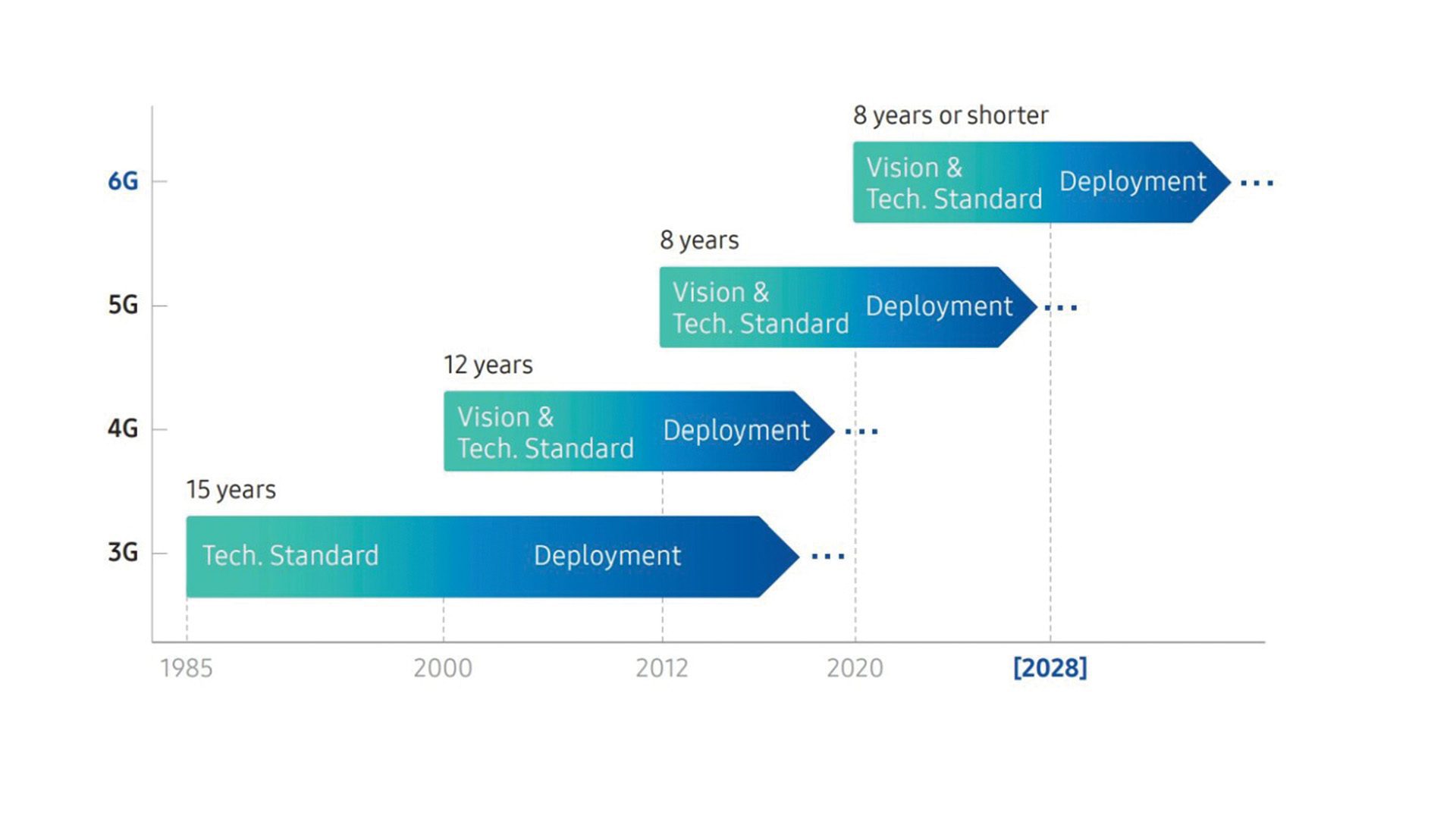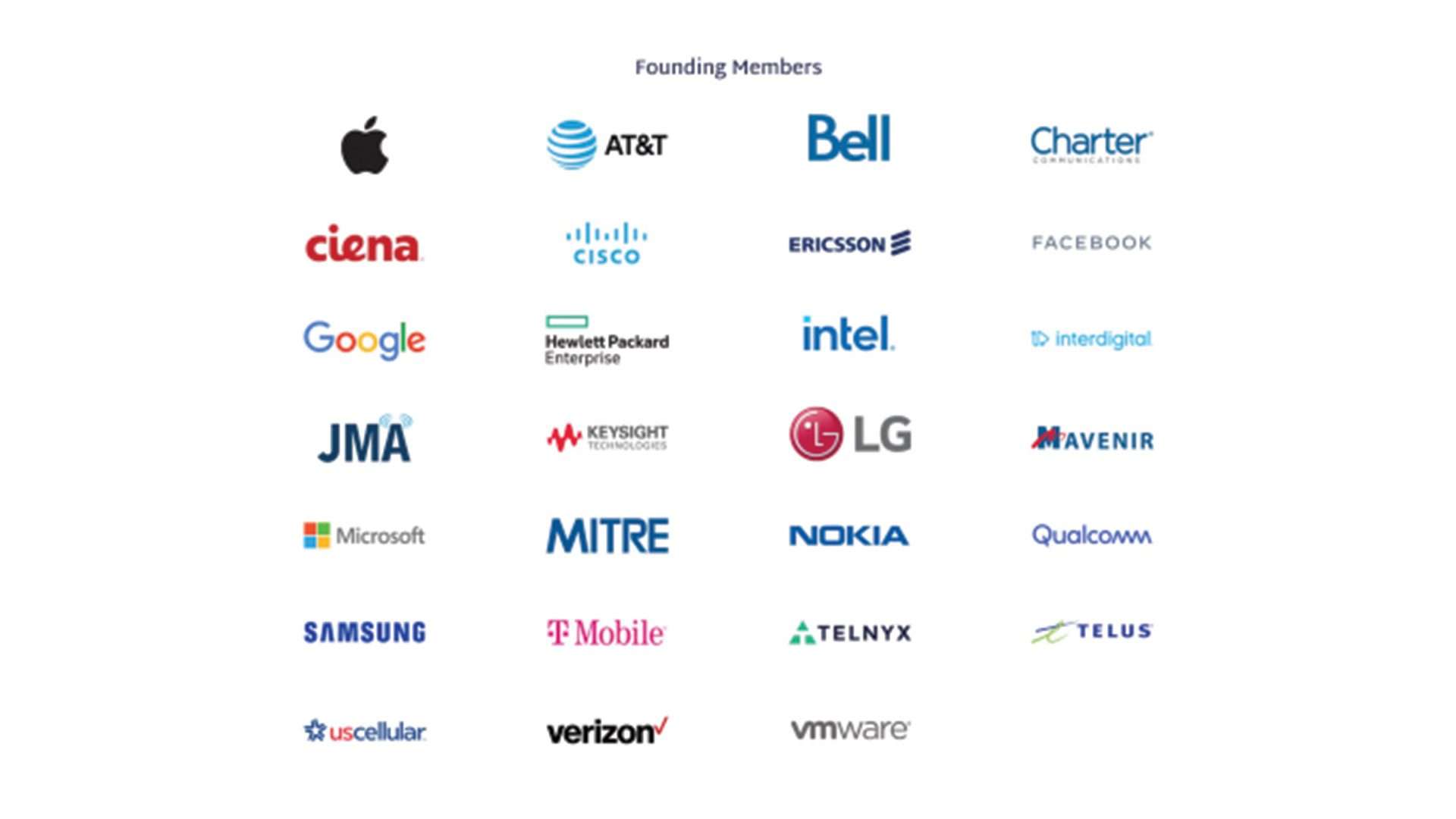In February 2022, AT&T announced their end of 3G and China made a major breakthrough in 6G technology, both milestones in the evolution of wireless communication. And, with 5G becoming increasingly developed, many experts are now looking towards wireless communication’s next generation: 6G technology.
What is 6G?
Wireless generations are standardized by the International Telecommunication Union (ITU); they are typically marked by a change in transmission or encoding. We are currently in the continually evolving fifth generation.

Photo Credit: Samsung
5G uses a mix of network frequency bands, classified as low, medium, and high. Even though 5G goes up to about 100 gigahertz (GHz), there is currently no frequency above 39 GHz that is used. For example, Verizon’s 5G Ultra Wideband service uses the spectrum band at 28 GHz and 39 GHz.
On the other hand, 6G, the sixth generation of wireless, will transmit data in the hundreds-of-GHz range, also known as the terahertz (THz) range. As a result, 6G networks will provide higher capacity frequency, bandwidth, and speed. Some experts believe that 6G networks could eventually allow users to hit max speeds of one terabit per second (Tbps)—that’s a thousand times faster than 1 Gbps, the fastest speed available on most home internet networks today.
What will 6G look like?
6G will likely have an advanced level of automation and connectivity in cars, drones, mobile devices, homes, and industries. However, research on 6G is still in its infancy.
Some researchers think that 6G could rely on collaborative AI to do things like help self-driving cars communicate with each other, navigate pedestrians and traffic, and more. Other researchers think that 6G will allow for more immersive, powerful technology such as cellular surfaces, connected implants, and wireless brain-computer interfaces. The Japanese mobile company NTT DoCoMo even envisions 6G to allow for a complete fusion of physical life and cyberspace with wearable and micro-devices mounted on the human body.
When will 6G come out?
ITU’s 6G standard will likely be completed around 2028 with widespread deployment occurring around 2030. But there are many challenges to figure out before 6G technology can come into fruition. For example, there are currently no semiconductor materials that can use multi-THz frequencies because the range requires enormous arrays of tiny antennas. And with the semiconductor shortage continuing, this challenge will only prove to be more of a roadblock.
Additionally, because terahertz waves are so fragile, they will likely have a weak capability of coverage, high cost of deployment, and more. And, with 6G looking to be the most expansive system yet, cybersecurity becomes a bigger issue than it already has been with previous generations’ encryption and security architecture.
Who is working on 6G?
Despite the many predicted and unforeseen challenges, many countries and companies have begun research and experiments on 6G technology. For example, in 2022 China announced that they sent one terabyte of data over 1km in a single second via 6G waves. This follows China’s other advancements into 6G technology, such as sending their self-defined “world’s first 6G satellite” into space in 2020.
Furthermore, the governments of South Korea and the U.S. announced a partnership over 6G research in 2021. South Korea’s Electronics and Telecommunications Research Institute is conducting research on the THz frequency band for 6G, and the U.S. Federal Communications Commission (FCC) opened 6G frequency for spectrum testing for frequencies over 95 gigahertz (GHz) to 3 THz.
As for private companies, communications companies Ericsson and Nokia have spearheaded Hexa-X, a consortium in Europe of academic and industry leaders working to advance 6G standards research. Also in Europe, the 6G Flagship project is working to combine research on 6G technologies.

Photo Credit: Next G Alliance
Major infrastructure companies like Huawei, Nokia, and Samsung have additionally announced that research and development of 6G are in the works. In America, companies like AT&T, Verizon, T-Mobile, and Apple are taking part in ATIS’ Next G Alliance, a group to help organize and further 6G research throughout North America.
Even amidst the multitude of challenges and uncertainties ahead, one thing is certain: 6G technology is coming.







